Hi folks. Newbie here June 2020.
A little background. I live in North Texas, Granbury, near Fort Worth. My house that I bought new with new sod has a 12000 sq ft yard with TIF 419 Bermuda installed 13 years ago. The original land here was a farm turned houses. The soil I would say is at least 30% clay, or terrible. You can dig it out and there are marbled clumps of clay here and there. Turns to concrete in the dead heat of summer. The typical TX style of preparing a new yard is, bring in Cats to level the ground. In some cases, like ours, spread an inch or two layer of sandy loam on top and then lay the sod. And in out case, put in an irrigation system.
Most houses in this community have Bermuda of some type. Some don't have irrigation at all. Some have turned into 100% weeds, and that creates a challenge at prevention. Water is very expensive where I live and a water bill can run as high as $300 after a regular 3 x per week yard watering. The pH of the soil, that I measured using an inexpensive meter, is around 6 to 7. I hired TruGreen by year two of my new home since battling the foray of weeds here was beyond my retail power. And they did a good job and it took about 3 years for them to beat them all into submission and then we could cut back from 6 to 8 times per year treatments to 4 times and maintain our grass looking pretty darn good and mostly weed free for 10 years.
About 4 years ago, however, was the beginning of pain with an apparent fungus (as a few different lawn pros of many years concluded). Although the roots of the grass in the brown ring areas aren't of the level of sickness of dead and easy to pull out, but simply the circular areas (ranging in size from one foot to about three feet) become unhealthy and simply resist strong growth regardless of sufficient water. Picture a 2 inch brown/tan ring around a 2 foot area that has shorter grass that is struggling to come through. At dusk you can look across and see those areas are a bit of a cavity look to them.
It started out as a few spots that I didn't notice nor did TruGreen visits forewarn that something bad was going on. And over the course of a few years are now more like 32 areas/spots. Bear in mind that in 2012 was the start of a three year drought that was really hard on this area with sparse rain and our lake level down so low that no boats could launch for three years. I really believe that was the time of pain for the yards that made them susceptible to attack including our fungus. (That's my assumption since the yard had zero problems for 10 years).
So on point, TruGreen applied a variety of pre-emergents, weed killers and fertilizers. And never any fungicides. I would water as much as possible without putting me in the poorhouse, probably a couple of inches per week but in the dead heat of July and August, with limited rain, sprinklers alone certainly can't compete with this desert. And eventually it simply stops growing and will, be late September/October start protecting itself by going dormant and browning out. And that's pretty much the pattern of everybody's yard in TX except those that live near the lake and can pump all the water they want onto their yard.
So about 8 months ago I stopped using TruGreen and hired a man who has chemistry background to try to solve the problem of fungus since TruGreen really doesn't have that level of depth. Even he wasn't exactly sure and called on others to give an opinion. In either case, they suggested two fungus treatments at a 30 day interval of different types. And those have been applied BUT, as I understand it from my own reading, those are supposed to be applied in the fall when the temperatures are at specific numbers, like around 70 deg surface soil temp. I'm not so sure he did it at the right time. And as I understand it, once you see the brown rings, those are the "symptoms" of the fungus that already attacked earlier. Not the fungus itself, which attacks more slowly and invisibly from the soil during the fall months. A very short period of time.
So the questions I have left are; Once a fungus gets into the soil, I'm not sure at what depth it resides. One video where they had Kentucky Bluegrass said that the fungus layer is like 3 feet down so digging up and replacing 8 inches of soil is pointless as the fungus will return and kill any new grass if not treated. (This was my plan. Of the 32 areas I have in my front yard, I planned to get a tiller and carve up 5 inches of sick areas and shovel and ditch all the soil/old grass and then put new good soil in and new sod.)
Or, will this fungus eventually run it's course and the grass eventually recover?
Should I start an expensive annual regimen of fungicide at the proper time to prevent further damage? I'm noticing now I even have a spot or two in my backyard as if the plague is not over and is spreading or is already rooted in the entire yard.
btw, notice the pic with words on it with new sod. That area is a problem where some weird, hard to identify grass with really deep roots about 8 to 10 inches long, invaded a 40 sq ft area of the yard around the same time that the fungus problem appeared. I got tired of looking at it, in spite of the fact that it, in and of itself, wasn't unhealthy. I dug out all the soil and roots and grass and put in new soil and sod 8 weeks ago.
Any other ideas? And thanks in advance for reading the saga.
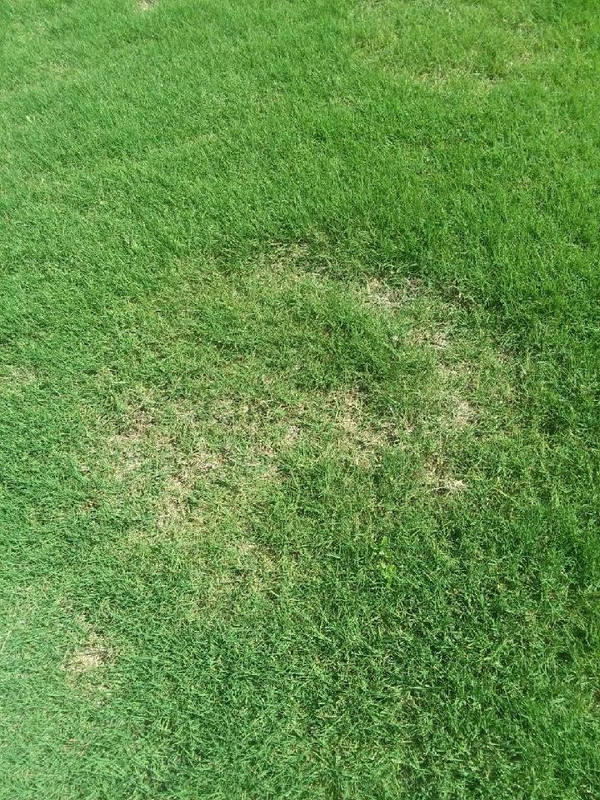
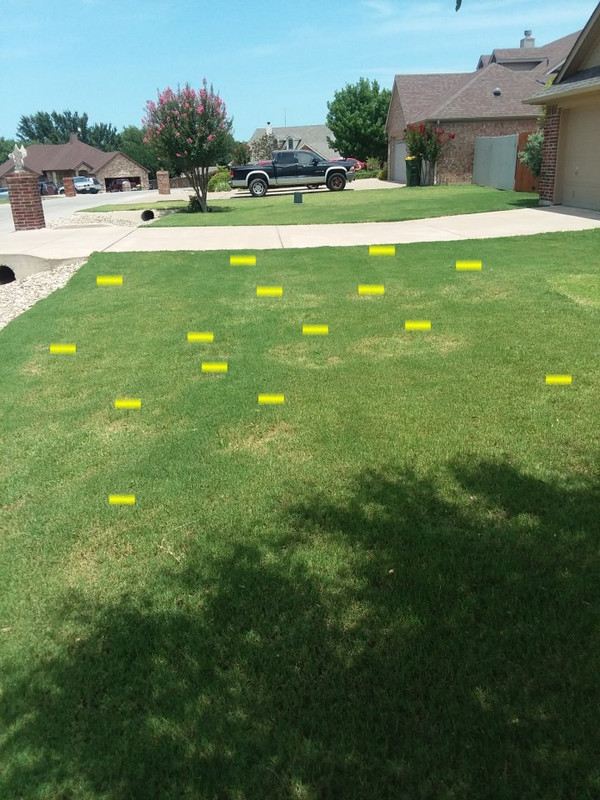
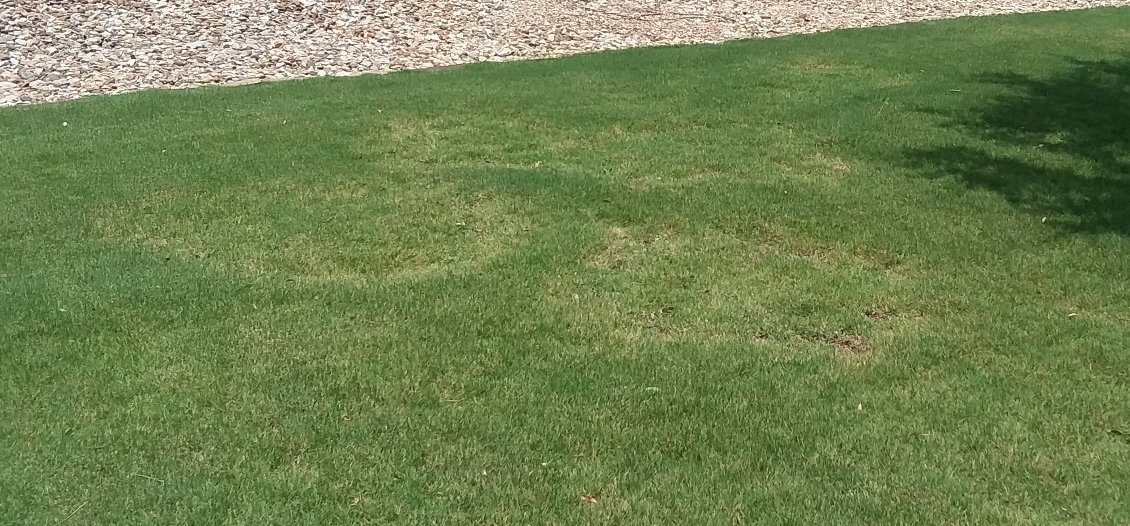
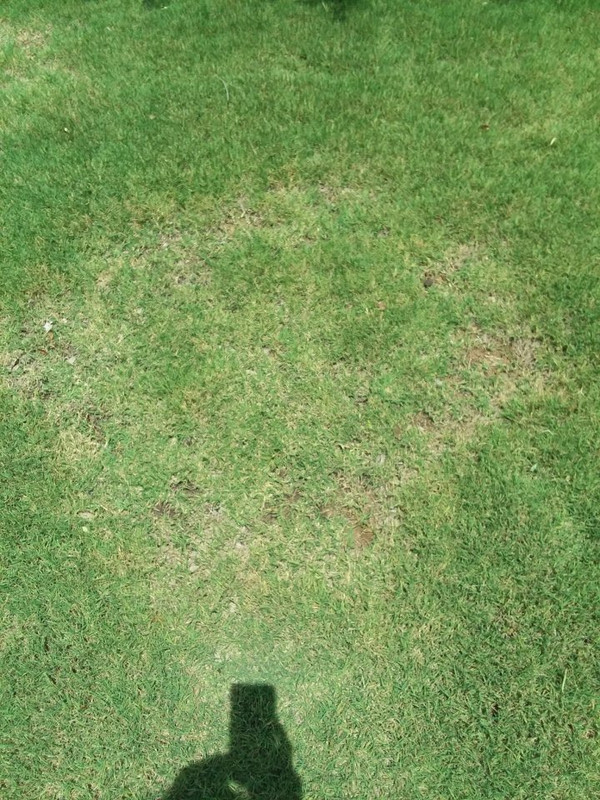
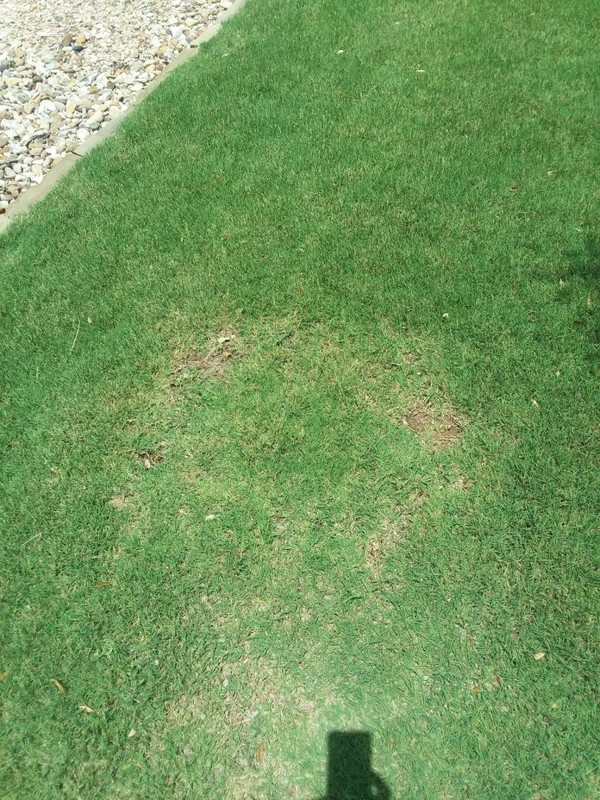
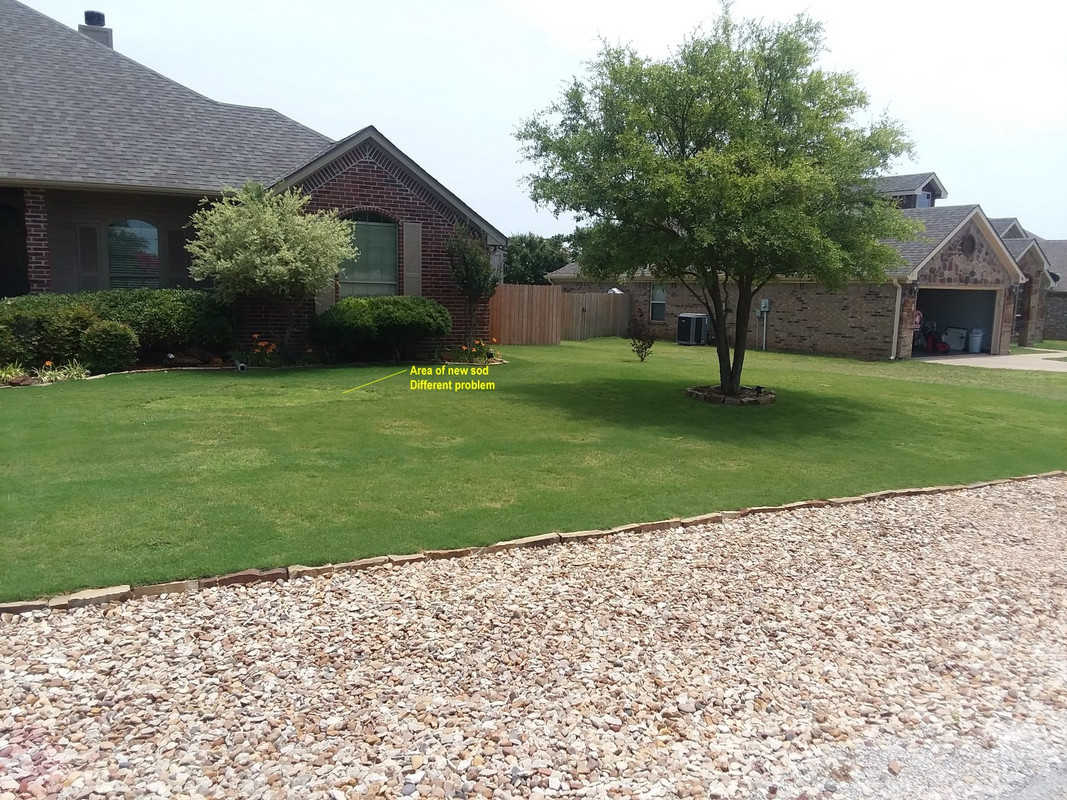
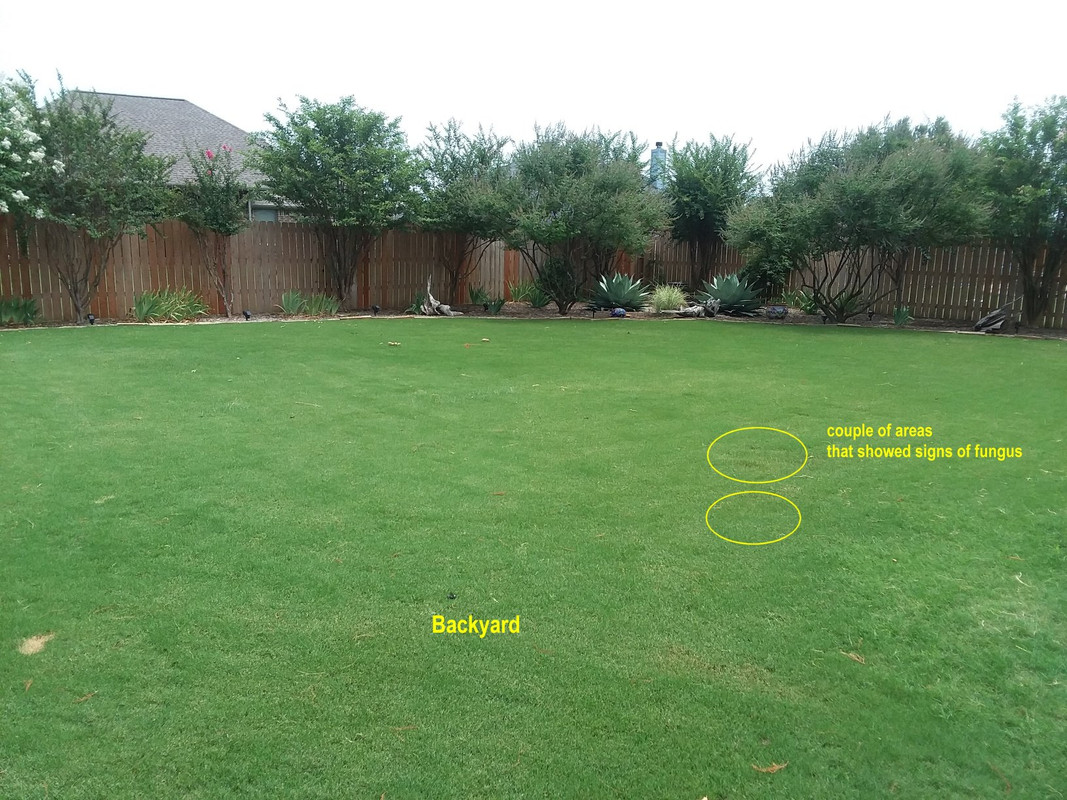
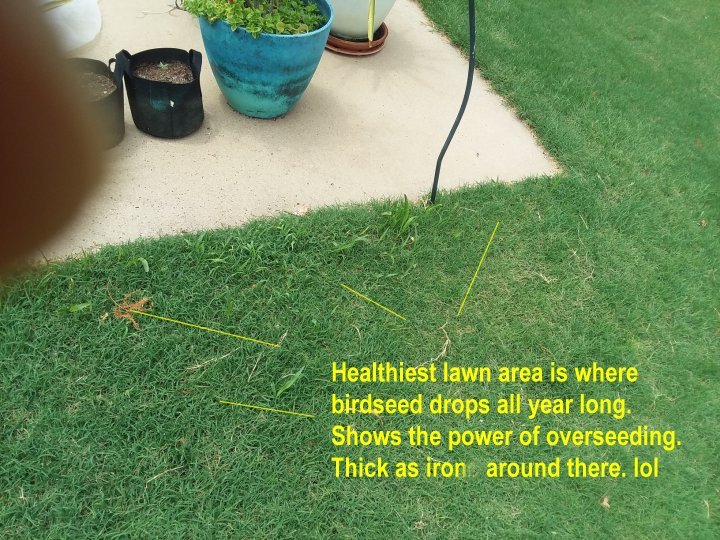
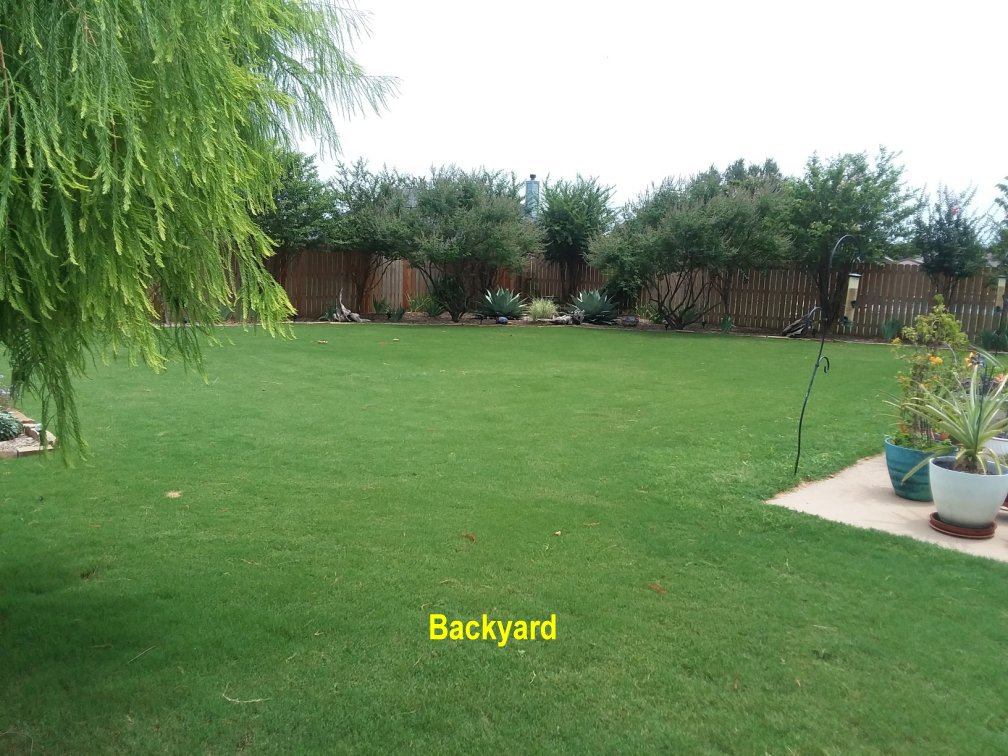
A little background. I live in North Texas, Granbury, near Fort Worth. My house that I bought new with new sod has a 12000 sq ft yard with TIF 419 Bermuda installed 13 years ago. The original land here was a farm turned houses. The soil I would say is at least 30% clay, or terrible. You can dig it out and there are marbled clumps of clay here and there. Turns to concrete in the dead heat of summer. The typical TX style of preparing a new yard is, bring in Cats to level the ground. In some cases, like ours, spread an inch or two layer of sandy loam on top and then lay the sod. And in out case, put in an irrigation system.
Most houses in this community have Bermuda of some type. Some don't have irrigation at all. Some have turned into 100% weeds, and that creates a challenge at prevention. Water is very expensive where I live and a water bill can run as high as $300 after a regular 3 x per week yard watering. The pH of the soil, that I measured using an inexpensive meter, is around 6 to 7. I hired TruGreen by year two of my new home since battling the foray of weeds here was beyond my retail power. And they did a good job and it took about 3 years for them to beat them all into submission and then we could cut back from 6 to 8 times per year treatments to 4 times and maintain our grass looking pretty darn good and mostly weed free for 10 years.
About 4 years ago, however, was the beginning of pain with an apparent fungus (as a few different lawn pros of many years concluded). Although the roots of the grass in the brown ring areas aren't of the level of sickness of dead and easy to pull out, but simply the circular areas (ranging in size from one foot to about three feet) become unhealthy and simply resist strong growth regardless of sufficient water. Picture a 2 inch brown/tan ring around a 2 foot area that has shorter grass that is struggling to come through. At dusk you can look across and see those areas are a bit of a cavity look to them.
It started out as a few spots that I didn't notice nor did TruGreen visits forewarn that something bad was going on. And over the course of a few years are now more like 32 areas/spots. Bear in mind that in 2012 was the start of a three year drought that was really hard on this area with sparse rain and our lake level down so low that no boats could launch for three years. I really believe that was the time of pain for the yards that made them susceptible to attack including our fungus. (That's my assumption since the yard had zero problems for 10 years).
So on point, TruGreen applied a variety of pre-emergents, weed killers and fertilizers. And never any fungicides. I would water as much as possible without putting me in the poorhouse, probably a couple of inches per week but in the dead heat of July and August, with limited rain, sprinklers alone certainly can't compete with this desert. And eventually it simply stops growing and will, be late September/October start protecting itself by going dormant and browning out. And that's pretty much the pattern of everybody's yard in TX except those that live near the lake and can pump all the water they want onto their yard.
So about 8 months ago I stopped using TruGreen and hired a man who has chemistry background to try to solve the problem of fungus since TruGreen really doesn't have that level of depth. Even he wasn't exactly sure and called on others to give an opinion. In either case, they suggested two fungus treatments at a 30 day interval of different types. And those have been applied BUT, as I understand it from my own reading, those are supposed to be applied in the fall when the temperatures are at specific numbers, like around 70 deg surface soil temp. I'm not so sure he did it at the right time. And as I understand it, once you see the brown rings, those are the "symptoms" of the fungus that already attacked earlier. Not the fungus itself, which attacks more slowly and invisibly from the soil during the fall months. A very short period of time.
So the questions I have left are; Once a fungus gets into the soil, I'm not sure at what depth it resides. One video where they had Kentucky Bluegrass said that the fungus layer is like 3 feet down so digging up and replacing 8 inches of soil is pointless as the fungus will return and kill any new grass if not treated. (This was my plan. Of the 32 areas I have in my front yard, I planned to get a tiller and carve up 5 inches of sick areas and shovel and ditch all the soil/old grass and then put new good soil in and new sod.)
Or, will this fungus eventually run it's course and the grass eventually recover?
Should I start an expensive annual regimen of fungicide at the proper time to prevent further damage? I'm noticing now I even have a spot or two in my backyard as if the plague is not over and is spreading or is already rooted in the entire yard.
btw, notice the pic with words on it with new sod. That area is a problem where some weird, hard to identify grass with really deep roots about 8 to 10 inches long, invaded a 40 sq ft area of the yard around the same time that the fungus problem appeared. I got tired of looking at it, in spite of the fact that it, in and of itself, wasn't unhealthy. I dug out all the soil and roots and grass and put in new soil and sod 8 weeks ago.
Any other ideas? And thanks in advance for reading the saga.













